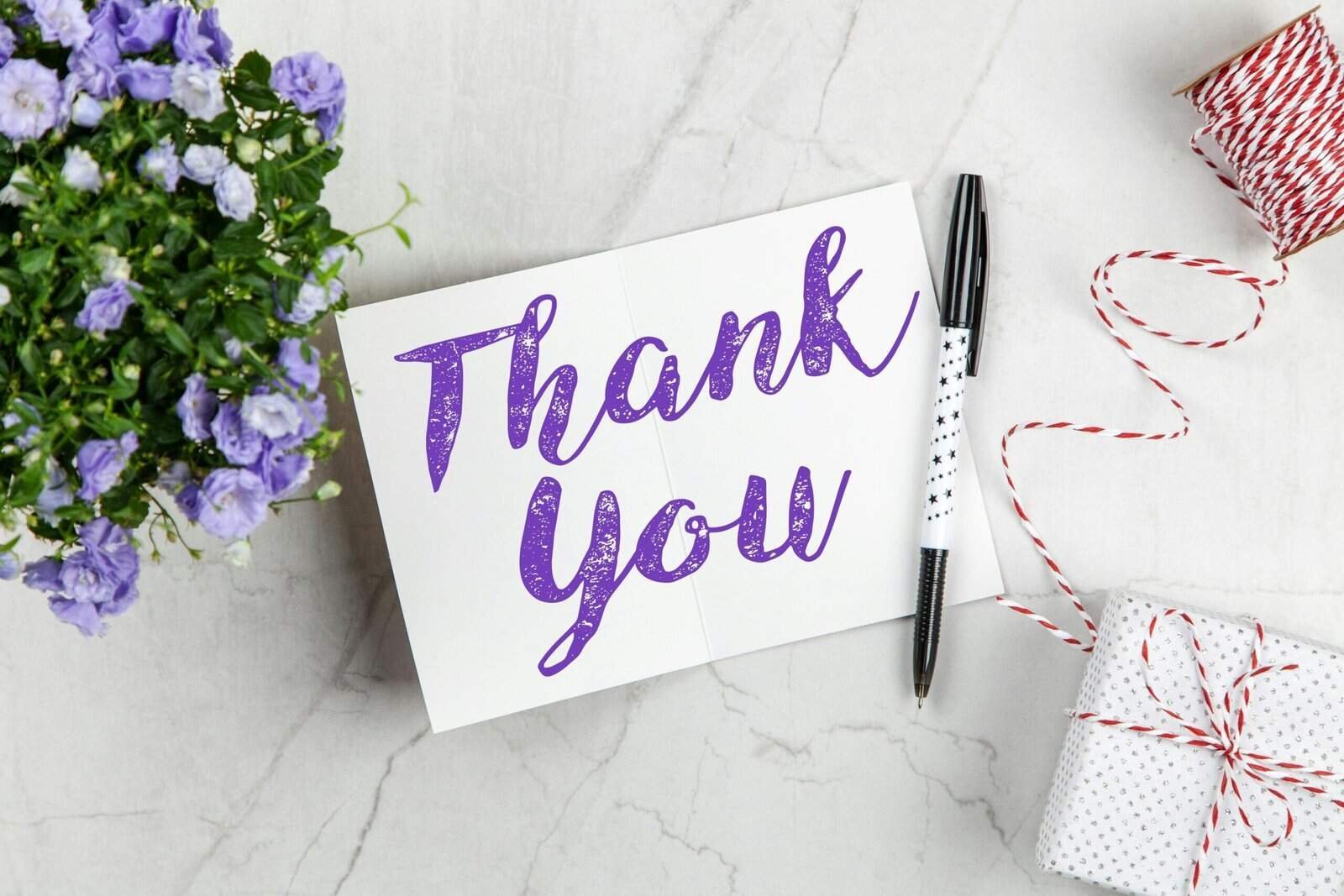?Have you noticed how a small “thank you” can change the tone of a client conversation or the energy in your workday?
What’s The Importance Of Gratitude In Freelancing?
Gratitude in freelancing is more than politeness; it’s a professional practice that shapes relationships, reputation, resilience, and revenue. This article explains why gratitude matters, how it works psychologically, concrete benefits you’ll see in your business, practical ways to practice it, and templates and metrics to help you apply it consistently.
Why this matters to you right now
Freelancing often feels transactional: deliverables, invoices, deadlines. Gratitude transforms transactions into human connections. When you intentionally practice gratitude, you create a sustainable freelance career that attracts better clients, reduces stress, and improves your long-term success.
How gratitude functions in a professional context
Gratitude vs. politeness: what’s the difference?
Politeness is often ritual and surface-level; gratitude is an appreciative stance that recognizes value and impact. You can be polite without being grateful, but when you express genuine gratitude you validate someone’s contribution and reinforce positive behavior.
The psychology behind gratitude
Gratitude triggers neural and emotional responses that improve mood, reduce stress, and promote pro-social behavior. You, as a freelancer, benefit from these effects because they make you more resilient, focused, and collaborative — traits that attract and retain clients.
How gratitude builds trust
Gratitude signals that you notice and value the efforts of clients, collaborators, and vendors. That perception increases trust because people feel seen and respected. Trust shortens decision cycles, improves communication, and reduces conflict — all of which save you time and mental energy.

Benefits of practicing gratitude in freelancing
Improved client relationships
When you express appreciation to clients, you strengthen bonds and create goodwill. That goodwill helps you during negotiations, scope changes, and when you need a reference or testimonial. Clients who feel appreciated are more likely to return for new work.
Increased referrals and word-of-mouth
People love to recommend professionals who are both skilled and pleasant to work with. Gratitude makes you memorable and likable, which increases the chance that satisfied clients will refer you to others. Referrals often convert faster and require less marketing spend.
Better team and collaborator dynamics
If you work with subcontractors, designers, editors, or other freelancers, gratitude helps maintain healthy working relationships. Appreciation reduces turnover, encourages quality work, and can even foster loyalty — all of which keep projects running smoothly.
Enhanced mental health and resilience
Gratitude reduces anxiety and depression symptoms by shifting attention from scarcity (what’s missing) to abundance (what you have). For freelancers who face uncertainty, gratitude helps you maintain perspective, recover from setbacks faster, and remain motivated.
Stronger professional reputation
A reputation for being appreciative and professional makes you more desirable in competitive markets. You’ll be perceived as someone who communicates well, values others, and delivers a positive experience, which often becomes a deciding factor for potential clients.
Financial and business benefits
Gratitude indirectly improves your bottom line. Loyal clients lead to repeat business, referrals, and opportunities to upsell. Reduced disputes save you time and money. Over time, those gains compound and materially improve your freelance income.
Practical gratitude practices you can use
Daily gratitude journaling
Spend 5 minutes a day writing three things you’re grateful for related to your work: a supportive client, a successful pitch, or even a smooth invoicing process. Writing anchors your attention to positive elements and trains your brain to notice wins.
Sending thank-you notes after milestones
After project completion, or when a client provides constructive feedback, send a personalized thank-you message. This communicates professionalism and makes the client feel valued.
Celebrating small wins publicly and privately
Share progress updates and milestones on your professional networks when appropriate, and privately acknowledge team members and collaborators. Public recognition builds your brand, while private acknowledgment strengthens relationships.
Building gratitude into client onboarding and offboarding
In your onboarding sequence, include a short message of appreciation for the client’s trust. At offboarding, thank them again and offer a small guide for next steps or maintenance. These touchpoints leave a lasting, positive impression.
Creating rituals for long-term clients
Offer annual check-ins with personalized messages, small gifts, or exclusive resources. Rituals show that you remember and value the relationship beyond individual transactions.
Active listening and reflecting back
Express gratitude through attentive communication. When a client or collaborator shares feedback, restate what you heard and thank them for their perspective. This practice shows respect and reduces misunderstandings.
Setting gratitude reminders
Use calendar alerts or habit trackers to remind yourself to send appreciation messages. In the busyness of freelancing, intentional reminders prevent gratitude from becoming inconsistent.

Examples and templates you can use right away
Thank-you templates for clients
Below are short, adaptable messages you can use after milestones, payments, or referrals. Personalize details for greater impact.
| Situation | Template (short) |
|---|---|
| After project completion | “Thank you for trusting me with this project. I really appreciated your clear feedback and collaboration — it made the work enjoyable. Looking forward to the next opportunity.” |
| After receiving payment | “Thanks for processing the payment so quickly. I appreciate how prompt you’ve been — it helps me keep projects running smoothly.” |
| After a referral | “Thank you for referring [Name/Company]. I’m grateful for the recommendation and will do my best to represent you well.” |
| After helpful feedback | “I appreciate your thoughtful feedback — it helped improve the result. Thank you for taking the time to share it.” |
Thank-you templates for collaborators and contractors
Use these to maintain good internal relationships.
| Situation | Template (short) |
|---|---|
| After a delivered component | “Thanks for delivering the [asset/task] on time. Your attention to detail made a big difference.” |
| After ad-hoc help | “I really appreciate you stepping in to help with [task]. Your support kept the project on track.” |
Sample gratitude email sequence for new clients
- After contract signed (Day 0): Thank you + next steps + point of contact.
- After first deliverable (Day X): Appreciation for collaboration + request for feedback.
- After completion (Final): Thank you + recap + referral/request for testimonial.
Measuring the impact of gratitude
Qualitative indicators
Pay attention to client tone, frequency of repeat work, and unsolicited positive comments. These signs show relationships strengthening.
Quantitative metrics to track
You can track changes over time in:
- Repeat client rate
- Referral count
- Average project value from returning clients
- Time to payment and invoice disputes
Use simple spreadsheets or your CRM to log these metrics and compare periods before and after implementing gratitude practices.
A basic measurement table
| Metric | How to measure | Why it matters |
|---|---|---|
| Repeat client rate | Number of returning clients / total clients per period | Higher rate signals stronger relationships |
| Referral count | Number of new clients from referrals | Direct indicator of goodwill and reputation |
| Average project revenue (returning clients) | Total revenue from repeat clients / number of repeat projects | Shows financial impact of strong relationships |
| Client response times | Average time to respond to emails/messages | Faster responses often indicate engagement and satisfaction |

Real-world scenarios and mini case studies
Scenario 1: Recovering a tricky relationship
You delivered a project under budget but the client felt a feature was missing. Rather than getting defensive, you thank them for their honesty, propose several options, and offer a small follow-up tweak at no charge. By acknowledging their perspective and expressing appreciation, you turn dissatisfaction into loyalty.
Scenario 2: Earning a referral through appreciation
You routinely send a short thank-you note after each completed project and include a small cheat-sheet relevant to the client’s business. A client found the cheat-sheet helpful and recommended you to a colleague, leading to a high-value retainer. A thoughtful gesture produced a measurable business result.
Scenario 3: Stabilizing a remote team
You manage several subcontractors across time zones. Implementing a monthly appreciation ritual (highlighting great work, sending small bonuses occasionally) reduced churn and improved delivery quality. The routine of recognition created a dependable team ecosystem.
Integrating gratitude into your brand and marketing
Make gratitude part of your brand voice
If your brand positions you as personable and client-centered, build gratitude into client communications and your website copy. Simple statements about valuing client partnerships can reinforce the impression visitors get when they interact with you.
Use testimonials to express gratitude publicly
When a client gives a positive testimonial, publicly thank them and share the story behind the project. This gives social proof while showing appreciation.
Gratitude as a differentiator in pitches
In proposals and first meetings, express genuine appreciation for the opportunity to submit a proposal or to learn about the client’s challenge. This humanizes you and makes you memorable.

Common mistakes and how to avoid them
Mistake: Generic or insincere gratitude
Saying “thanks” without specifics feels hollow. Always mention what you’re grateful for and why it mattered. Specificity makes gratitude credible and meaningful.
Mistake: Overdoing it or creating dependence
Too many small gifts or over-the-top praise can feel manipulative. Maintain professional boundaries and focus on meaningful, proportionate acts.
Mistake: Forgetting to follow up
If you thank someone in the moment but don’t follow through professionally (e.g., miss a deadline), your gratitude rings false. Align expressions of appreciation with consistent performance.
Mistake: Not customizing messages
Templates are helpful, but personalization has the biggest impact. Reference project details, outcomes, or a personal interaction to make your gratitude resonate.
How to scale gratitude as your freelance business grows
Systematize without losing authenticity
Create templates, schedule reminders, and build gratitude touchpoints into your client lifecycle while retaining personalization for high-value clients. Automation can handle routine messages; personalized notes should be reserved for pivotal moments.
Train collaborators in your gratitude culture
If you subcontract work, share your expectations about client communication and appreciation. Provide sample messages and guidelines so your team represents your brand consistently.
Budget for appreciation
Allocate a small percentage of revenue for client appreciation (gifts, software that enables personalized notes, or subscriptions to a card service). Treat it as a marketing and retention expense.

Potential objections and how to answer them
Objection: “I don’t have time for gratitude.”
Small actions take little time but yield long-term returns. A brief, specific message can take less than two minutes and can prevent hours of future friction.
Objection: “It feels unprofessional to get personal.”
Gratitude needn’t be personal in a private sense. Professional appreciation focuses on outcomes and collaboration. It enhances your professional image rather than undermining it.
Objection: “Will it seem manipulative?”
Authenticity is the antidote to manipulation. If your gratitude comes from a genuine place and is tied to real actions and results, it will be perceived as sincere.
Templates and scripts (expanded)
Short scripts for phone or video calls
- After kickoff: “I appreciate you taking the time to meet. I’m excited to get started and glad you chose to work together.”
- After resolving an issue: “Thanks for your patience as we worked through that. I appreciate your input — it helped us find the best way forward.”
Text-based message templates (detailed)
- Completion + testimonial request: “Thank you for trusting me with [project name]. I’m proud of the results we achieved together. If you’re happy to, a short testimonial would help me connect with similar clients. Either way, I appreciate the opportunity.”
- Referral thank-you + offer: “Thanks so much for referring [Name]. I’m grateful for your support. If there’s anything I can do for you in return — help with a small task, an audit, or a discount on future work — I’d be glad to.”
Table: When to use which template
| Moment | Template type | Key elements to include |
|---|---|---|
| After contract signing | Onboarding gratitude | Thank you, next steps, point of contact |
| Mid-project milestone | Progress appreciation | Specific achievement, collaborative element |
| Project completion | Final thanks + CTA | Summary, gratitude, testimonial/referral ask |
| Invoice paid | Payment thanks | Appreciation, confirmation, next steps |
| Small favors | Informal thank-you | Specific favor, outcome, short offer to reciprocate |
Long-term habits to keep gratitude consistent
Habit: Weekly gratitude review
Once a week, list interactions or actions you appreciated. Choose one to write a note about. This keeps you intentional without overwhelming your schedule.
Habit: Quarterly relationship audit
Assess your top clients and collaborators quarterly. Decide who deserves a special gesture or check-in and set goals to strengthen those relationships.
Habit: Gratitude in your content calendar
Include client stories or appreciation posts (when permitted) in your content schedule. This reinforces your brand and helps you stay consistent.
When gratitude isn’t enough — combining gratitude with accountability
Gratitude does not substitute for quality
You must still deliver excellent work. Gratitude supports positive relations, but it won’t repair consistent underperformance. Use gratitude alongside professional rigor and clear expectations.
Use gratitude to smooth difficult conversations
If you need to enforce boundaries or discuss scope creep, start by acknowledging the relationship and expressing appreciation before stating facts and expectations. This tone improves receptivity.
Frequently asked questions
Will gratitude work in competitive or corporate environments?
Yes. Professional gratitude — concise, specific, and tied to collaboration — is often appreciated in corporate contexts. It humanizes interactions without compromising professionalism.
How often should I send thank-you notes?
Quality over quantity. For routine milestones, keep messages short and specific. For high-value clients, more personal gestures twice a year can be effective.
Can gratitude be automated?
Partially. You can automate reminders and base-level messages, but personalize the most important notes. Automation helps scale but should not replace genuine personal touches.
What if a client doesn’t respond to gratitude?
Not everyone responds, and that’s okay. The act of gratitude still influences their perception and your professional reputation. Don’t take silence personally.
Final checklist: Gratitude actions you can implement this week
- Write three work-related gratitude items in a journal for five minutes each morning.
- Send one personalized thank-you note to a recent client or collaborator.
- Add gratitude reminders to your project checklist (kickoff, milestone, completion).
- Create or select two templates and personalize them for your top clients.
- Schedule a quarterly relationship audit in your calendar.
Conclusion
Gratitude is a strategic habit that supports your freelance success across relationships, reputation, resilience, and revenue. When you make gratitude intentional — specific, sincere, and consistent — you build a professional practice that keeps clients returning, encourages referrals, and protects your mental well-being. Start with small, repeatable actions this week, and you’ll likely see compounding benefits in months, not years.
